Choosing a backcountry campsite ultimately comes down to three things: Safety, Leave No Trace and Comfort. I’ll break them down here, as well as give some tips so you always find a good campsite.
Safety
There are a lot of things which can go wrong when backcountry camping. But smart campers don’t let this scare them. Instead, they take basic precautions to prevent injuries and accidents. Avoid pitching in these areas when choosing a campsite and you’ll be safe.
- Cliffs and steep slopes: There is a high risk of rock falls and avalanches in these areas. If it rains, you’ll also get pelted by large sheets of water coming off the cliff.
- Gorges: Flash flooding is a serious risk in gorges.
- High water mark: If you are near a body of water, note the high water mark and stay well above it.
- Depressions, valleys and other low-lying areas: Water tends to accumulate here, which can flood your tent.
- Trees with dead branches: Also known as “widowmaker trees,” these can fall on your tent and kill you.
Leave No Trace
This principle is all about leaving the least impact possible on nature. It also means not bothering other campers in the area. To follow this principle when choosing a campsite:
- Always choose existing campsites: If there is an existing campsite, use it!
- Pitch on sandy or compact ground: If no campsite exists, choose sandy or compact ground.
- Avoid fragile areas: Don’t pitch your tent on top of fragile ecosystems such as alpine meadows.
- Stay 200 feet from water sources: The plantlife around water sources is fragile. You also don’t want to block access to the water for wildlife.
- Also stay 200 feet from trails: This way you won’t bother other campers or hikers.
*Exceptions to the 200 feet rule: If there is an existing campsite near a body of water (but still safely above the high water mark) or by the trail, use it! It’s better to break the 200 feet rule than make a new campsite.
Comfort
Comfort is the last thing to consider when choosing your campsite. You’ll mostly want to pay attention to the wind (listening to your tent flap around does not make for a good night’s sleep!). Try to find natural wind breaks, such as clusters of trees, to pitch next to. If shade is important to you, pay attention to where the sun will be in the daytime and evening and pitch accordingly.
Tips
- Give yourself plenty of time. Finding a good backcountry campsite can be very difficult. Make sure to budget at least an hour to find camp. If you find a good spot at the start of that hour, pitch right away. Don’t keep hiking in hopes that you might find a better spot.
- Put gear down and take a quick walk around. I’ve made the mistake of pitching my tent at a good-enough campsite, only to find a much better site just 100 feet away. I’ve since learned to scout out the area a bit instead of pitching immediately.
Want this information in PRINTABLE format?
Then you need my Camping Cheat Sheets.
The manual has 42 pages crammed with illustrated guides about everything from campfire cooking to wilderness first aid.
And because you made it to the end of this post, I’ll even give you 50% off 😀


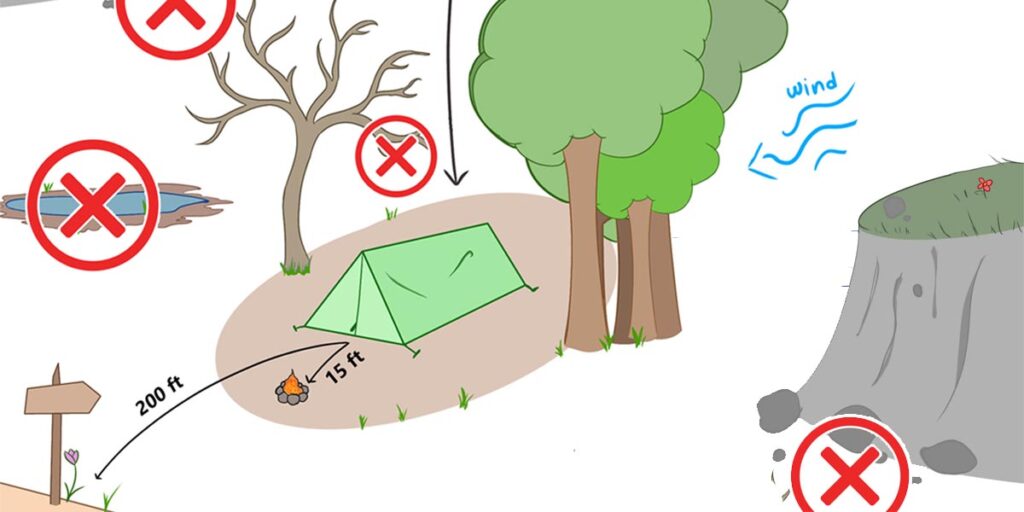
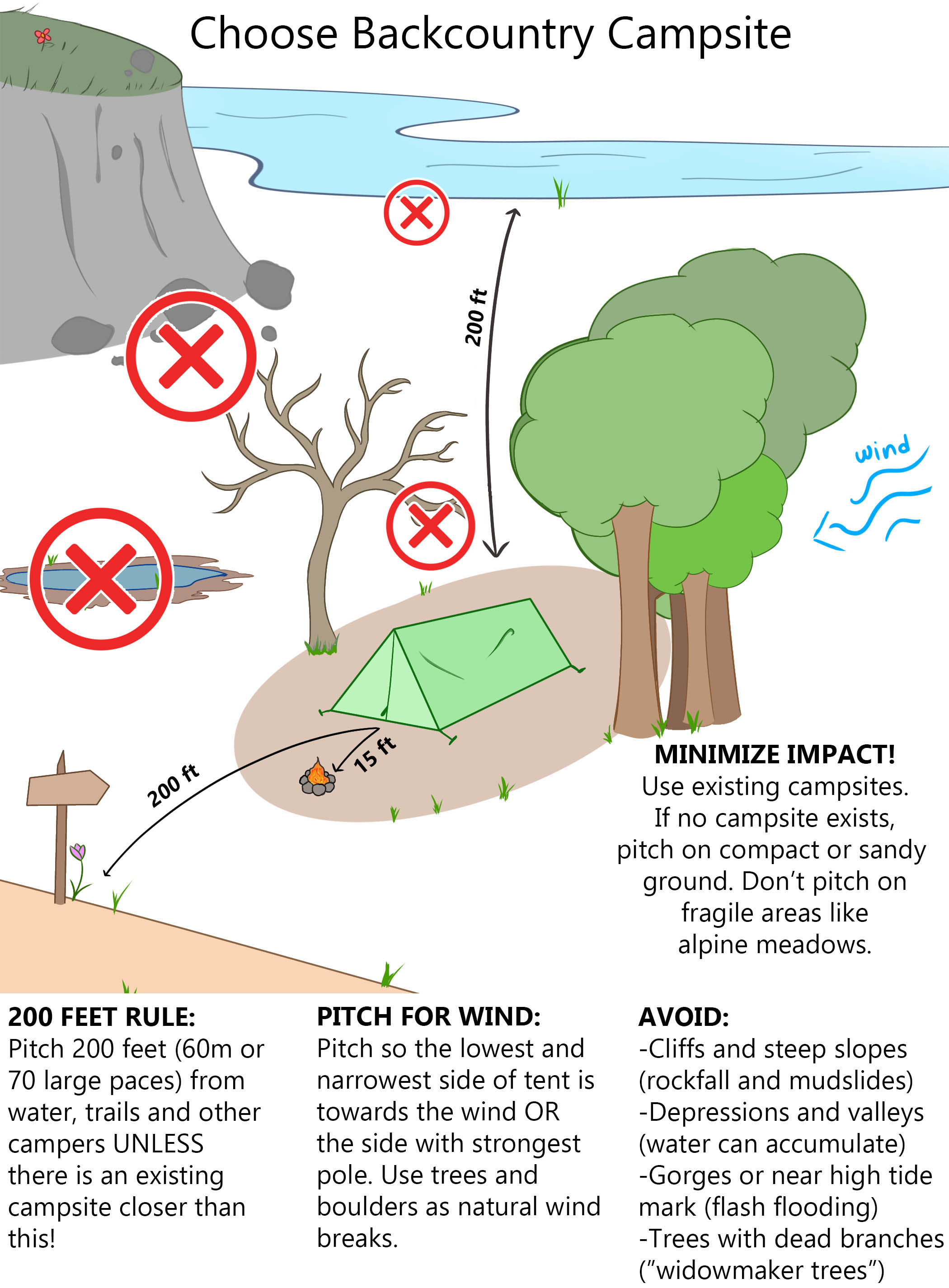
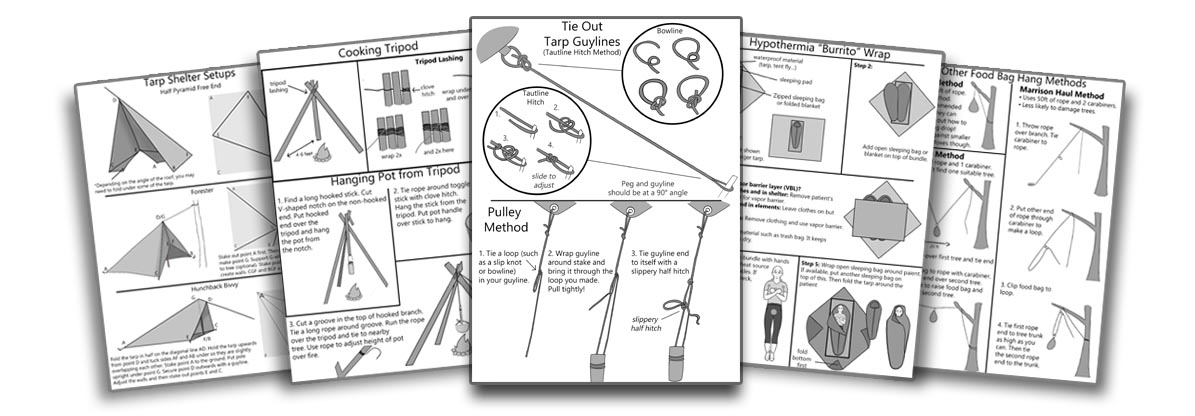
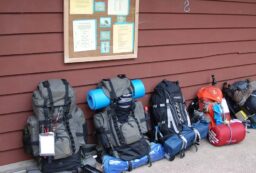
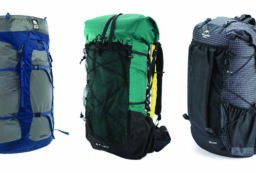








Post your comments